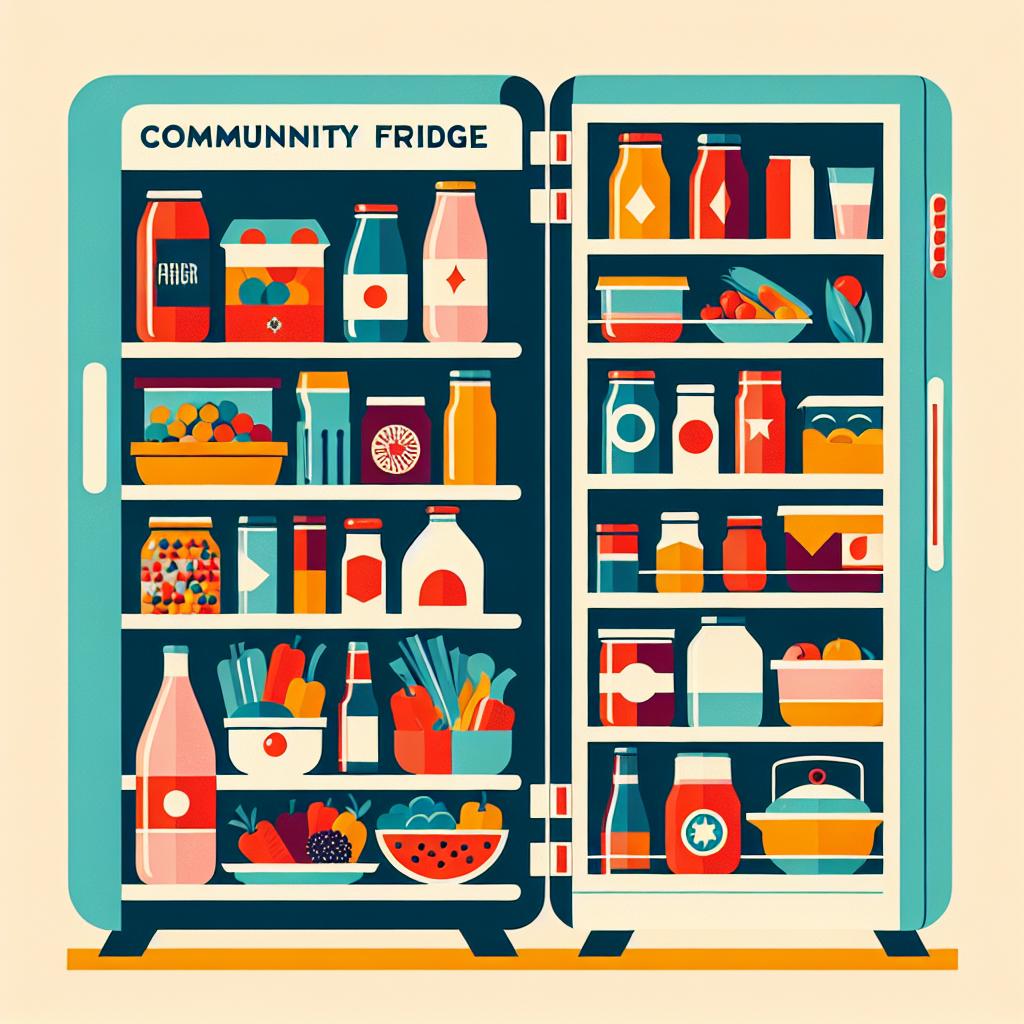The Rise of Community Fridges
In an era marked by escalating food insecurity, especially amplified during the COVID-19 pandemic, community fridges have emerged as grassroots solutions poised to make a real difference. These local, volunteer-led efforts are steadily taking root in various urban areas, drawing on the power of community collaboration to tackle hunger.
Community fridges are essentially free food resources, accessible to all, with a particular focus on assisting low-income individuals and families who may struggle to put food on the table. Not only do these initiatives facilitate access to food for those in need, but they also promote a sense of community by encouraging neighbors to look out for one another.
During the pandemic, the shortcomings of our food systems were laid bare, revealing the shortcomings for vulnerable populations. Supply chains faltered, food prices spiked, and many individuals facing economic hardship found themselves with limited means to procure nourishment. In response to these mounting challenges, the community fridge model took off, fueled by a blend of necessity, innovation, and mutual aid.

How They Work
The procedures behind community fridges are deceptively simple yet profoundly impactful. Local volunteers maintain the fridges, filled with an assortment of food items donated by individuals, restaurants, and food retailers just looking to do good in their neighborhoods. For example, some supermarkets provide unsold but still consumable products, contributing to both hunger alleviation and the reduction of food waste.
Volunteers step into vital roles, monitoring fridge contents, ensuring food safety, and communicating with community members about the availability of fresh produce, ready-to-eat meals, and canned goods. This retail-esque work serves dual purposes—ensuring sustainable operations while also fostering connection within communities.
The working relationship established with local businesses has proven to be a win-win; grocery stores and restaurants gain goodwill while simultaneously redirecting consumables that may otherwise go to waste. As one volunteer noted, “It’s for humanity; we all deserve to eat.”
Challenges and Considerations
While the existence of community fridges represents a growing movement to alleviate hunger, they are not without their challenges. A significant issue brought to light involves the question of food safety. The unregulated nature of these initiatives means that safety standards may vary widely. Some community members worry about the risk of foodborne illness due to the lack of professional oversight.
Moreover, sustainability is yet another hurdle that these initiatives must navigate. What happens to the community fridge in a particularly harsh winter? Are there guarantees for a consistent supply of donations? Questions around the long-term viability of community fridges demand attentiveness as they work to solidify their places in the public sphere.
Addressing these issues will require open communication, clear standards, and perhaps local governmental support to bolster these efforts while maintaining food safety and ethical operational practices.
A Type of Mutual Aid
These fridges are more than mere tools for combating hunger; they exemplify a form of mutual aid that stands in direct relationship to the growing concern of food insecurity. They foster an environment where community members can actively collaborate towards a common goal, creating networks of support that extend beyond regard for basic needs. They are not only meeting nutritional requirements but also restoring dignity and fostering connections among neighbors.
The beauty of community fridges lies in their organic evolution—no matter how entrenched the systemic problems of food scarcity might seem, individual communities are reminding themselves that they have the power to institute change through local action. It’s a demonstration that, even in trying times, communities possess the spirit of resilience necessary to address the issues facing them.
As these initiatives proliferate across cities, they challenge prevailing narratives about food scarcity by underscoring the importance of community action and engagement in fostering solutions. Community fridges might just offer insight into a different kind of future—one centered on collaboration, creativity, and a sense of responsibility towards one another.



